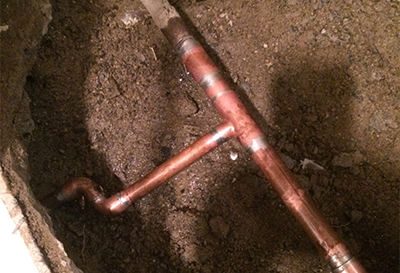Unmask Hidden Water Line Leaks: Six Smart Detection Hacks
Unmask Hidden Water Line Leaks: Six Smart Detection Hacks
Blog Article
Just how do you really feel about Top leak detection hacks?

Early discovery of dripping water lines can alleviate a potential calamity. Some little water leakages might not be visible.
1. Examine the Water Meter
Inspecting it is a proven way that assists you discover leaks. If it relocates, that indicates a fast-moving leak. This means you might have a sluggish leak that could also be below ground.
2. Examine Water Usage
If you detect unexpected changes, regardless of your usage being the same, it indicates that you have leaks in your plumbing system. An unexpected spike in your bill suggests a fast-moving leak.
A stable boost every month, also with the very same habits, shows you have a sluggish leak that's likewise gradually rising. Call a plumber to extensively examine your building, specifically if you really feel a cozy location on your flooring with piping beneath.
3. Do a Food Coloring Examination
When it comes to water consumption, 30% comes from bathrooms. If the shade somehow infiltrates your dish during that time without flushing, there's a leak in between the tank as well as dish.
4. Asses Exterior Lines
Do not forget to inspect your outdoor water lines also. Ought to water leak out of the link, you have a loosened rubber gasket. One small leakage can squander tons of water as well as spike your water bill.
5. Check and also Analyze the Situation
Property owners must make it a behavior to examine under the sink counters and also also inside closets for any kind of bad odor or mold and mildew development. These 2 warnings show a leak so timely interest is needed. Doing routine inspections, even bi-annually, can conserve you from a significant issue.
Inspect for discolorations and also weakening as the majority of appliances as well as pipes have a life expectancy. If you believe leaking water lines in your plumbing system, don't wait for it to rise.
Early detection of dripping water lines can reduce a possible disaster. Some little water leaks might not be visible. Inspecting it is a proven way that assists you uncover leakages. One tiny leak can lose heaps of water and also increase your water bill.
If you think leaking water lines in your plumbing system, do not wait for it to rise.
The Dangers of Undetected Water Leaks
Mold
One of the most common results of undetected water leaks in your home is mold. Under the right conditions, mold can begin to grow and spread in just a day or two.
Moisture from water leaks combined with humidity and lack of ventilation allow mold spores to germinate and start spreading.
And while household mold doesn’t carry the same health risks as substances like asbestos, they can cause allergic reactions in people sensitive to them or with asthma.
Structural Damage
When water leaks occur in places we can’t see — above the ceiling, behind walls or beneath floors — they often have time to do some serious damage before making themselves known.
You might notice cracks or bubbles appear in your walls or a slow drip or water from the ceiling.
These are signs of water leaks and buildups in the structure of your home. If you don’t jump on these problems soon enough, the wood frame that supports your house could start rotting, leading to costly repairs and increasing the risk of disasters like ceiling or wall collapses.
Water Waste
According to the Alliance for Water Efficiency, the average home can lose anywhere from 2,000 to 20,000 gallons of water per year due to leaks.
High numbers like that might make you imagine a burst pipe spewing out water. But believe it or not, even a small, constant drip from a kitchen sink could add up to over a thousand gallons of wasted water in a single year.
And if you live in a place where you pay for every gallon of water you use, that adds up to a lot of dollars down the drain. So we understand leaks are bad. Let’s take a look at some of the common (and not-so- common) water leaks you might find around your home.
Flush Valve Flapper
The flush valve flapper is a rubber flap that sits above the flush valve at the bottom of the tank. It’s attached to the flusher with a chain. Over time, it can get worn out and lose its seal, causing an endless flow of water into the toilet bowl.
These leaks are hard to detect since they’re usually silent, but there’s a little insider trick you can use with just a little dye or food coloring:
Put a few drops in the toilet tank. Check the water in your toilet bowl 15 minutes later. If any of the color made it into the toilet bowl, you’ll know what the culprit is.
Fill Valve
The fill valve is what replenishes your toilet’s tank water after you flush. If you’ve ever looked inside your toilet tank and seen water gushing out of an upright plastic valve, that’s a faulty fill valve.
https://meetflo.com/blogs/flo/how-to-find-and-repair-water-leaks-a-comprehensive-guide

Do you enjoy reading about Leaking water lines? Give a remark below. We'd be pleased to hear your feelings about this piece. We hope that you visit us again later on. Are you aware of someone else who is fascinated by the topic? Please feel free to share it. I treasure reading our article about Locating water leaks.
Address leaks promptly. Report this page